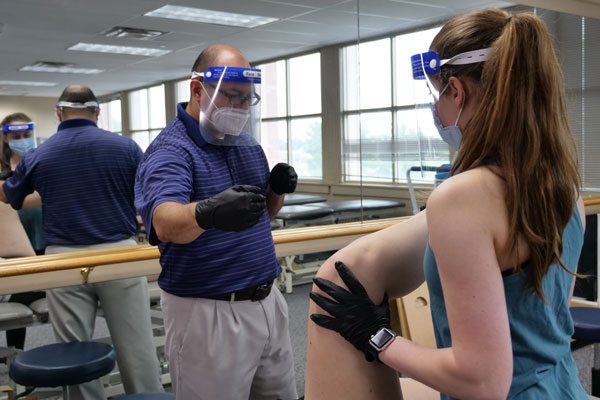President's Blog: From the Heart

A New Playbook
By Eric F. Spina
“In medicine, we say if you hear hoof beats, it’s probably a horse, but sometimes it’s a zebra. And so we keep a little zebra file because we see interesting zebras, too,” Medical Director Dr. Mary Buchwalder observed in a University of Dayton Magazine piece about how UD is responding to COVID-19.
I think that’s an apt metaphor for how our faculty and staff are creatively finding their footing and preparing to help students adapt in this unpredictable world we find ourselves.
In times that call for change, we often lean on the words of Marianist founder Blessed William Joseph Chaminade, S.M.: “new times call for new measures.” In no small measure, we’re all being called to think differently, be nimble and flexible, and look at each day with an open mind and heart.
For this watershed moment, we need a new playbook — and are writing one.
Nearly 100 administrators, faculty, staff, and students have developed detailed plans for returning to teaching, learning, research, and experiential learning on campus this fall with measures to promote safety and lessen the risk of the spread of the virus. Against that backdrop, we worked with public health officials this summer to pilot projects, testing our ability to adapt our pedagogy, experiential learning, and community engagement.
For example, 60 doctor of physical therapy students donned personal protection equipment — face coverings, gowns and gloves — as they returned to newly configured UD classrooms for a hands-on “boot camp.” The skills the students learned helped to prepare them for clinical rotations, which are now up and running with new safety measures.
“The physical therapy profession requires hands-on skills that cannot be learned through a computer screen. Having the ability to clarify techniques with our professors and be given real-time feedback on proper set-up, required force, and proper body mechanics was instrumental in our learning,” said Alex Nagy, who’s now using the skills he learned with patients in an orthopedic clinic.
Last month, 38 students in the master’s in physician assistant’s program adhered to public health protocols as they wrapped up clinical rotations in family practices and hospitals, among other settings. Lindsey Hammett, program director and chair, offered her students the option to wait and restart clinical rotations, but they are, at heart, caregivers. I admire their heart and resolve.
“Our students know and understand they will be on the frontlines fighting COVID at this time next year, and all elected to return to clinical rotations,” she said.
Meanwhile, the Chapel of the Immaculate Conception opened its doors for Mass during a “soft opening,” with a limited number of congregants and ministers in attendance, and Roesch Library piloted a no-touch model for pick up and return of books, largely for faculty, graduate students, and scholars from other universities.
I applaud Dean Kathy Webb and the library’s staff for offering seamless service during a time when many university libraries suspended circulation. As Elizabeth Jacobs, senior circulation specialist noted, “Just because in-person classes have been halted (this summer), that doesn't mean that research has stopped.”
We prepare students to adapt for a changing world. Today, we are taking those same lessons to heart as we lay plans for a return to campus.
